Honda winners include new Civic, Indy 500
By John Gilbert
The end of April was a good time to launch the all-new, ninth-generation 2012 Honda Civic, although the end of May might have been even better. The end of May is time for the Indianapolis 500, which gathers an annual turnout of up to 400,000 spectators to the Indianapolis Motor Speedway, and millions more worldwide television viewers.
The 2011 Indianapolis 500 is the 100th running of the classic oval-track race, and while single-seat, open-wheel missiles traveling 227-mile-per-hour laps around the 2.5-mile track may seem distant to something as basic as a new compact car, the parallel is perfect. A good bet to be the top-selling compact car for the coming year would be the Civic. An even better bet to win the Indy 500 would be to pick — Honda.
That one is a cinch, because all 33 entries in the Indy 500 will be powered by Honda engines. Every single one. It is a testimony to Honda’s engineering and technology that no other company can compete with Honda in the world’s fastest race. Race reporters seem to take Honda’s participation for granted, and very few other people — including in the automotive media — seem to be aware how totally Honda dominates the Indy Car race scene. For decades, Honda’s technical superiority is only exceeded by the company’s inability to promote its superiority. Maybe that’s why nobody made the connection to trumpet the combined facts of Honda’s success in a race in which durability and efficiency are as important as speed, while introducing the Civic, the real-world icon of Honda’s applied engineering efficiency.
Unlike Honda’s monopoly at Indy, the Civic faces stiff competition, the stiffest ever in the subcompact segment since the Civic was introduced to the U.S. as a 1973 model. Traditional rivals, such as the Toyota Corolla, Nissan Sentra, and Mitsubishi Lancer, have been joined by the Mazda3 and in 2011 by a new Hyundai Elantra, Chevrolet Cruze, and Ford’s new Focus and even the smaller Fiesta.
Nonetheless, the Civic seems pretty well set to be top seller in the segment. The styling remains on the leading edge outside, and is outstanding inside, with driver’s instruments and ergonomics that are a model for the industry. The seats are good and supportive, and rise to excellent in the sporty Si version. The shape of the car enhances visability down the steeply raked hood in all models, and while looking ahead, you find it easy to also see a large digital speed readout, on a strip of electronic instrumentation just above the thick and comfortably grasped steering wheel. Look above the wheel for your speed, and looking through the wheel gives you the large tachometer and other instruments, plus a new information panel to the right that can be changed to various preferences.
It’s all very race-car like, reminding us of going back to the 1990 era, when Honda dominated Formula 1 Grand Prix racing in the hands of the late Ayrton Senna. In Formula 1, or Indianapolis racing, a driver doesn’t have a lot of time to be studying instruments, so a glance at a digital tach or speedometer must suffice. It was back then that Honda adapted its technical expertise from Formula 1 onto its production models, including a generation of Civics that ran from 1991-1995. With variable valve-timing, double-wishbone suspension, and all-wheel disc brakes, the Civic of that generation stood as the best until the 2006 model rolled out. If you get on CarSoup and find a clean 1991-95 Civic EX, it would be a perfect second family car or an offspring’s first car, regardless of miles.
No other car compares to the array of five or six different models offered by the Civic. They range from the DX that starts at $15,605 ($16,405 for the automatic version), to the LX at $17,655/$18,455, the EX at $19,705/$20,505, with the top-level version EX with navigation and leather interior for $23,455. A specially-modified HF model, tweaked for higher mileage, is priced at $19,455, and attains EPA highway estimates of 41 mpg, compared to 39 for the rest of the fleet’s 1.8-liter figures. In
addition, a sportier high-performance Si model is again offered, ranging from $22,205 to $23,905, depending on whether you choose a coupe or sedan. The Si has a larger engine, and a 6-speed stick rather than the 5-speed offered in other coupes and sedans. Those stick shifts are smooth and precise in feel and engagement.
The Civic Hybrid is upgraded considerably, switching from a nickel-metal hydride battery pack to lithium-ion, which is more compact in size and far more efficient in developing and holding electrical power. Paired with the 1.5-liter engine from the smaller Fit, the added boost brings the horsepower up to a mere 110, with 127 foot-pounds of torque, which equates to more torque at fewer RPMs. Spread through a continuously-variable transmission, the car moves with adequate power, and it has improved EPA estimates of 44 miles per gallon, whether city or highway. A Civic Hybrid base price is $24,050, and with navigation and leather, can rise to $26,750.
If that’s not enough, a natural gas version of the Civic will be coming as a production model this fall.
Design of the new Civic is not an enormous departure from the current model, which made a total and stunning design makeover and won the 2006 North American Car of the Year award for design, interior space, performance, price, fuel economy, and diversity of models. The new car has a different look from the front, taking on some of the Insight’s lower grille appearance, and it rounds off the current model’s attractive wedginess into a more rounded shape. Overall length remains the same, while the wheelbase is shortened by a couple of inches, which helps agility a bit and helps interior room quite a bit. The interior remains creatively arranged, with a dashboard that combines a personal cockpit-style for the driver, and falls away gracefully to give the front passenger surprising spaciousness.
At the car’s introduction, in Washington, D.C., we drove from our Georgetown hotel out to FedEx Field, the Redskins NFL stadium, in a loaded EX-L model, then tried out the rest of the fleet. A steady rain finally let up so we could try a couple of cone-lined, parking-lot courses. A couple of Si Coupes proved their potency and handling there. The larger 2.4-liter four-cylinder, its 16 valves driven by dual overhead-camshafts, revs freely and is well-matched to its 6-speed manual transmission. Upgraded suspension settings and larger 17-inch wheels give the Si firmer and more stable cornering capabilities, and further put to rest the common misconception that front-wheel-drive cars aren’t as fun to fling around a track as rear-drivers. In fact, on the well-moistened autocross course, a rear-drive car would have left the choice of letting up or spinning out in places where you could hammer the throttle and simply steer the Si around the curve. The Si adds distinctive sound from the exhaust tuning, and improves on the already good Civic seats with added side bolsters in the cushion and backrest.
The Si’s 201 horsepower peak at 7,000 RPMs and 170 foot-pounds of torque at 4,300 revs, up from the 140 horses at 6,500 and 128 foot-pounds at 4,300 for the normal 1.8 liter models. However, at 2.4 liters, the much larger engine drops Si fuel economy to 22 city/31 highway from the normal Civic’s 28 city/39 highway.
The 1.8-liter four, with a single overhead cam smoothly operating four valves per cylinder, remains the Civic mainstay, except for the Si and Hybrid. On a milder handling circuit, the Civic felt predictable, although it leaned a lot more in sharper curves than the Si, which was to be expected. Honda parked a new Hyundai Elantra nearby for comparison purposes, and I must say the Korean competitor had good power and actually seemed to lean less in hard cornering.
A Civic Hybrid mileage test on normal roads sent me out with James Bell, a good friend from Los Angeles, as codriver. The roadways leaving FedEx Field are as complicated as the folks downtown trying to solve the federal budget. No matter. We had zeroed the odometer and kept driving, up and down some suburban roadways until we reached the specified mileage. My fuel economy was 44.1, which I thought was OK, but a bit disappointing, because I light-footed it all the way. James drove similarly and attained 53.7 miles per gallon — an excellent reading that was third best of all. An engineer explained the discrepancy as the battery being depleted when we first got in the car, and my session recharged the battery pack, which provided more free power and thus better fuel economy during my partner’s run.
The new Civic has been improved by increasing the amount of high-strength steel to 55 percent, making the car lighter yet stronger, with a 10-percent increase in torsional rigidity. More safety technology helps the driver handle situations better. And some high-tech additions enhance that safety. Motion-Adaptive EPS coordinates with the standard antilock brakes and traction and stability controls, as well as with electric power steering to act as soon as the computer detects instability, to improve directional stability in cornering. Problems in curves come down to oversteer or understeer, and are worsened in slippery situations. Turning the wheel too much for the curve (oversteer) is detected and braking force is applied to the outside wheels, helping the driver stay on the proper trajectory. Not turning the wheel enough for a curve (understeer) is similarly offset with the Civic system suppressing engine torque to the inside wheel while also braking the inside wheels to help the driver negotiate the curve.
With such technology, and having models with capabilities ranging from the Hybrid’s real-world 50-plus mpg, to the speed, quickness and agility of the Si, and satisfactory everyday performance out of the other models in between, the Civic seems primed to hold its place atop the compact segment.
The Civic, be assured, is better than the puzzling advertising campaign from RPA, Honda’s ad agency for three decades. Television ads lacked anything resembling cleverness for the current 2011 models, but they’ve hit bottom now. First, showing ghoulish zombies and furry critters eager to drive the new Civic is supposed to indicate that you should join right in with those zombies and animated creatures in desiring a Civic. Another new campaign features the catch-phrase “To Each Their Own.” The proper phrase is “to each his own,” where “his” is accepted for gender-neutral coverage of all humanity, but RPA apparently has decided that striving for political and gender correctness overrides the need for grammatical and proper English usage.
At the post-introduction press questioning, there was some fear that the car itself could falter to meet the low-level ad scheme. Someone asked why there was only a 5-speed stick and 5-speed automatic. Honda officials said that their market research indicated that buyers didn’t care. One engineer said that combining optimum fuel economy and value, the technology to go to a 6-speed wasn’t necessary. Furthermore, there are no steering wheel paddles for manually controlling the automatic, to which the answer was that market research showed buyers didn’t use paddles. As for the stick, the engineer said that they worked hard to get the gear ratios correct to balance fuel economy and driveability.
If there had been a gong, it would have sounded right then — three times, just for the perceived value of the competition. The new Elantra offers a 6-speed in stick and automatic, the Focus and Fiesta automatics are not only 6-speed but are direct-sequential gearboxes as well, and even the Cruze offers a choice of 6-speed stick or 6-speed automatic. The decision to stay with 5-speeds for both manual and automatic leaves the Civic with last-generation technology. Also, the Elantra, the Cruze, the Mazda3 and others offer manual gates or paddles on their automatics, and whether buyers use them or not, by lacking such manual control the Civic falls short again.
Honda’s suspension engineers always have been outstanding, based on how the Civic and other Hondas handle. The independent suspension is good, and the new Civic has MacPherson struts up front and multilink geometry at the rear, both reinforced by stabilizer bars. It does the job, but as I felt the EX model lean in cornering, I couldn’t help but recall my favorite 1991-95 Civic EXes that had, standard, double-wishbone suspension on all four corners. It was right off the race car technology, and while it was expensive, it also was superb — part of what convinced me of Honda’s superior technology.
Those 1991-94 Civic EXes also had 4-wheel disc brakes, standard, and now Honda tries to suggest that using rear drum brakes with the front discs on the DX, LX, HF, Hybrid, and the natural gas models is justified. Only the Si and EX models get 4-wheel discs. I anticipate technical advancements from Honda, and such decontenting is not what I expect from my technical leader.
In addition, claiming an all-new engine gives he Si more horsepower is a bit misleading. The 2.4 engine has been used in Hondas for years. I know well of a 1994 Prelude VTEC with that engine, and it more recently powers the larger Accord sedans. Stuffing a larger-displacement engine into a smaller car seems more General Motors than Honda, which has built its reputation on over-achieving technology from smaller engines to run with larger competition. With nearly a 25 percent increase in displacement over the current 2.0-liter four, adding only 4 horsepower wouldn’t make me eager to give up that high-revving jewel of a 2.0.
The pluses far outweigh any such minuses, particularly from the ad agency’s phrase “To Each Their Own.” I thought maybe I was being too critical about it until the New York Auto Show, when Honda executive vice president John Mandel, reading a teleprompter to avoid overlooking any pertinent facts, finished his presentation by saying: “…To Each His Own.” When asked if the teleprompter actually said “his” or “their,” Mandel laughed and refused to say. He did, however, point out that his wife is an English teacher.
It was reassuring to know that literate people can rise above bad advertising. It would also be reassuring to know that Honda technology can rise above such modern twists as using market research to rationalize decontenting. Now Honda has to find a way to prevent its semi-literate catch-phrase from sending English teachers all over the country to one of the Civic’s hot, new competitors. That specific repercussion might be a sure-thing bet. Although not as certain as that the Indianapolis 500 winner will drive to the finish line in a Honda.
New York: MPG, asterisks, bad grammar
By John Gilbert
NEW YORK, N.Y. — The conclusion of the New York Auto Show on May 1 also ended the international auto show season for 2011, affording us an overview of a recovering automotive industry facing a struggling economy with rising fuel prices, and the coinciding demand for inexpensive vehicles with good fuel economy.
The New York show, at Jacob Javits Center, is now the nation’s largest-attended auto show, and indicates strides U.S. companies are making to take on the levels of style, technical, and luxury of the top European companies, and the price and fuel-efficient leadership from Asia, where Japanese companies themselves are challenged by the surging Korean tandem of Hyundai and Kia.
Audi got a jump on the show by holding a sneak-preview media launch of its new A7 sedan on the eve of the first press day at the show. Audi still has the compact A3, and recently introduced a new A6 sedan that fits between the midsize A4 and the luxury flagship A8, leaving little room for another niche vehicle in the Audi line, but the A7 will plug in where its numerical designation fits as arguably the best-looking sedan in the fleet. Audi chairman Johan de Nysschen said that while the A6 is outselling the Mercedes E-Class and BMW 5-Series in Europe and Asia, the company intends to have it do the same in the U.S. “The A8 and A6 fit nicely as full-size and mid-size,” he said, “and the A7 will appeal to buyers in both segments.”
At the A7 introduction, lead designer Ulrich Beierlein gave a presentation of what inspired him to draw all the curves and grooves on the sleekest Audi yet, a car that begins with an enlarged Audi family grille, and two parallel crease lines tracing the sides, with the upper crease curving upward to meet the rear pillar. The effect is a unique accent angle to make the sleek four-door sedan emphasis the fastback, coupe-like roofline. The A7 is loaded with futuristic connective technology, emphasizing new partnerships with Google-Earth, Wikipedia and T-Mobile, making the A7 a rolling WiFi hotspot. It is built with a lot of structural high-strength aluminum, and powered by a supercharged 3.0-liter V6 with 310 horsepower and 325 foot-pounds of torque. Thanks to an 8-speed Tiptronic transmisison, it claims instant responsiveness and highway mileage up to 28 miles per gallon.
German companies always have justifiable pride in their engines, but this time Audi is promoting a bit of confusion because of a “3.0T” badge on the A7 rear decklid. In Audi and VW nomenclature, “T” has always meant turbocharging, which is an exhaust-driven turbine that sends a blast of increased air-fuel into the engine, whether a TDI (turbo diesel injected) or the 2.0T (for turbo). Supercharging is a belt-driven power fan that force-feeds air to do the same thing. The 3.0T badge should thus mean the 3.0 is turbocharged, but another little badge on both sides of the A7 says “supercharged.” Audi executives tried to be flippant about it, saying we should now consider “T” to mean “charged,” whether turbocharged or supercharged. Since the two systems are so different, and Audi has always been so precise, that doesn’t add up, and when cornered, an Audi executive said,”I’ll look into it.” The charged-up new A7 is, officially, supercharged, thank you, and will be available by mid-May, at a sticker price of $59,250.
The show itself had numerous new attractions that were either global or at least getting first North American display after being shown in Geneva or Shanghai last month. The Javits Center is located just far enough from Midtown that we can declare it Off-Broadway, and if is an Off-Broadway show, Hyundai and Kia, which show no signs whatsoever of leveling off from their recent meteoric rise in stature, did their part to steal the show.
The U.S. “Big Three” also has been promoting high-mileage entries throughout the auto show season. The four major U.S. shows — Los Angeles in November, Detroit in January, Chicago in February, and New York in mid-April — have featured Chevrolet’s Volt and Cruze, and upcoming Sonic. Ford has the Fiesta and Focus. Chrysler has a highly efficient new V6 and its new owner, Fiat, offers its tiny new Fiat 500. While pushing high-mileage cars makes sense, the American “Big Three” tastefully withheld the recent heavy promotion of earlier unveiled and overpowering cars, such as GM’s Camaros and Cadillacs with supercharged Corvette 6.2-liter V8s, Ford’s variety of high-powered Mustangs, and Dodge Chargers and Challengers, plus the newly unveiled Jeep Grand Cherokee with available Hemi V8s up to 6.4 liters without supercharging.
As for new products, Chevrolet presented an all-new Malibu, with just enough revisions to remain between the larger Impala and the smaller Cruze, while resembling both. A new 2.5-liter 4-cylinder Ecotec has 20 more horsepower than the old 2.4, and has EPA estimates of 26 mpg city, and 38 mpg highway for the car, which will hit showrooms in early 2012.
Ford previously introduced its compact Focus and subcompact Fiesta, both attaining 40 mpg with special models, preceding the New York introduction of a revised Taurus, which will add the new 2.0-liter4-cylinder EcoBoost engine as an option. The EcoBoost indicates turbocharging, which will deliver 237 horsepower and 250 foot-pounds of torque, and will also get “at least” 30 mpg. Standard in Taurus will be the 3.5-liter V6 with increases in horsepower and torque to 297 and 255, respectively. The SHO high-performance Taurus continues with new styling touches and the EcoBoost 3.5 V6, turbocharged and with all-wheel drive.
Chrysler showed several new 300 models, and introduced the SRT-8 model of its totally new 2011 Grand Cherokee, meaning its Hemi can lay four patches of rubber, presumably, on burnouts, while taking you to the mountains it can also scale. Chrysler downplayed its outstanding new 3.6-liter V6 that will supply very good base power to all its vehicles. New owner Fiat has done some impressive things with the interiors of all Chrysler and Dodge models, and it goes its own way with separate Fiat 500s, including the unveiling of a cabrio model that has a nicely arranged full sunroof that slides back over the cabin.
Hyundai’s totally redone Accent subcompact comes in both sedan and hatchback, starting at a mere $12,445. Standard is a new 1.6-liter, dual-overhead-camshaft, 4-cylinder engine with the costly feature of gas-direct-injection (GDI) and 6-speed manual or automatic transmissions. Structures built with a lot of high-grade steel can be both lighter and stronger, and the 2,396-pound Accent is 182 pounds lighter than a Fiesta, making it simple to join the Elantra, the soon-to-be-released Veloster and some Sonata models in the over-40-mpg brigade.
Hyundai president John Krafcik assured any reluctant buyers that Hyundai’s rising residual value will now be bolstered by a guaranteed future trade-in value. Krafcik also tossed a clever dart at the misleading promotion of high-mileage competitors. He said that high price and lack of recharging infrastructure limit the new plug-in-electric Chevrolet Volt and Nissan Leaf, but there are others promoting 40 mpg — the Honda Civic FX, Chevrolet Cruze Eco, Ford Fiesta Super-Economy, and the Focus Super-Economy, the Smart fortwo, and the Elantra.
Krafcik said he wondered how they were all selling so Hyundai asked Edmunds.com for sales figures on all those special 40-mpg models for the first quarter of 2011. “Altogether the others sold just under 5,000 units,” said Krafcik. “We sold over 30,000 Elantras in the same time, so we were outselling all the other 40-mpg cars six to one for the first three months. We wondered why those others were not selling.”
The answer, he suggested, was the asterisks required on ads by competitors, which indicate, in fine print, that the car pictured wouldn’t get 40 mpg, and only specialty models costing a couple thousand more can attain 40-mpg.
Then he clicked on a video, showing a flock of animated blue asterisks blowing across the prairie like tumbleweeds. Actor Jeff Bridges did the voice-over, explaining how asterisks “once roamed free in this country,” but have recently become an endangered species because of all the auto companies who must use them to point out that their main models won’t hit the advertised 40. As the video goes on, the animated asterisks hide out behind trees like fugitives on the run, emerging happily only when a Hyundai Elantra approaches, with no need of an asterisk, because all of its models top 40. The video ended among laughter and applause from the usually cynical media, and was followed by cannons firing blue foam asterisks into the gathering.
Kia, with the benefit of Hyundai’s recent engineering brilliance as a subsidiary partner, unveiled its 2012 replacement for the subcompact Rio in both sedan and hatchback, sharing the same 1.6 GDI engine. An engine shutoff at idle should help the Rio fuel economy even more, and for less than $13,000, the Rio will be built out of 85 percent recyclable material.
Kia also introduced some styling and engine revisions to the hot-selling Soul, which hasn’t even been out two years yet. The new Soul will use the new 1.6 GDI or a 2.0, and officials promise greater use of the popular hamster commercial concept. Priced between $12,000 and $15,000, their stickers and their 40-mpg stature fit well as gas prices sail over $4 per gallon and head for $5.
High mileage was the buzzword from Japan, which started the trend years ago, but which is currently faced with production slowdowns because of the recent earthquake and tsunami. Mazda promises a makeover of its mainstream engines — major news from a company that will add “green-greeen” to its traditional “zoom-zoom.” Mazda officials vow their new Skyactiv gasoline engines will get the fuel-economy of a diesel, which is very good, and will bring to the U.S. a turbodiesel that will get the fuel-economy of a hybrid, which is even better. The diesel is coming to North America in two years. Meanwhile, Mazda said the Menagi concept SUV first shown in Geneva and on display at New York, will be built as the CX-5, using an all-new platform with Mazda’s all-new engines.
Honda introduced the long-awaited production model of its new-generation 2012 Civic, and features its extra-cost HF, which will reach 40-mpg. The same 1.8-liter engine remains in the new-bodied Civics, as does the unchanged 5-speed stick or 5-speed automatic transmissions, which drop Honda behind several competitors that now offer 6-speeds in both transmissions. The Civic Hybrid changes from nickel-metal hydride to a lithium-ion battery pack that is smaller and more potent, to combine with the 1.5-liter out of the Fit. The sporty Si is the only model that will get a 6-speed stick, although its “new” and larger engine with “more power” turns to have only four more horsepower by replacing the higher-revving — and more fuel-efficient — 2.0-liter gem with the larger 2.4 Handa has used with larger vehicles for two decades.
Nissan, which has moved past Honda as Toyota’s top challenger in homeland Japan, introduced a new Versa subcompact, which looks good, and should be a bargain with a base model starting at $10,990. However, after delivering the Leaf all-electric car, the subcompact Versa offers a disappointing highway maximum EPA rating of 37 mpg amid the flock of competitors’ 40-plus cars.
Toyota displayed its new iQ model of Scion, a tiny runabout which will be rolled out first on the East and West Coasts before venturing to the Midwest. Scion also will get the new FR-S sports car, so far only a concept, with a front-engine/rear-drive plan, with a Subaru-built “boxer” engine, low and flat-opposed pistons for a lower and sleeker set-up.
From Germany, Volkswagen has redone the “new” Beetle into, simply, the Beetle, with its arching silhouette peaking just slightly more toward the rear, as if hinting at more of a teardrop restyling, and it touts its 2.0 TDI turbodiesel which is clean and quiet and already proven for getting more than 40 mpg, with gusts to 50, along with the slick 6-speed DSG (direct sequential gearbox) automatic. March sales were reportedly the best for the company in seven years for VW, with the new Jetta doubling sales from March of 2010. Loyalty rates are up 46 percent among buyers, and conquests are up 106 percent. There is a hybrid engine in the Touareg SUV, but VW is most proud of its turbo-diesels. Jonathan Browning, CEO of VW of America, said customers are becoming more aware of the TDI models of Golf, Jetta, Passat and Touareg.
The new Passat TDI will get 43 mpg, and the Touareg, which is up 44 percent in sales, is up to 46 percent TDIs. The Golf TDI will come out with VW’s 4-Motion all-wheel-drive system, on its TDI model. VW also showed the concept Bulli, a squarish, vanlike vehicle that has a lithium-ion batter for electric drive, and an iPad for all driving and other information, fastened on the center console stack.
Along with Audi, Mercedes commanded plenty of attention with the North American showing of its new C-Class Cope and C63 AMG Coupe, and captured some economy-car impact with the Concept A-Class debut, with a live, but apparently lip-synching group of energetic folks from Mercedes TV ads, emerging from the audience to sing, “Oh lord, won’t you buy me a Mercedez-Benz?”
Porsche and BMW talked hybrids and electric power for the future, with a hybrid Panamera a breakthrough for Porsche. Saab, from Sweden, unveiled a high-styled and exotic sports coupe with a 1.6-liter turbo powering the front and an electric hybrid motor running the rear.
Mini, a subsidiary of BMW, attracted a large gathering to start the second press day with a performance by legendary rock band KISS. Photographers pressed close, prepared for a loud and raucus show, but when the curtains opened, there were only three members. Paul Stanley was away, tending to personal business, and apparently he’s the only member who can sing, because there was no music. Four custom-painted Mini Countryman 4-doors will be given away as Unicef charity auction donation, but the whole show fell flat because painted-face guys repeatedly sticking out their aging tongues, and a PR man painted up to look like a short and pudgy KISS member, were humorous parts of a much-hyped show that misfired.
As cars get more high-tech, sometimes the advertising and promotion can’t keep up. Advertising copywriters for Honda appear to be trying to dumb down prospective buyers of the new Civic. Honda’s advertising and promotion have lagged sadly behind the company’s technical brilliance for two decades. Recently, Honda’s television ad campaign about really big deals shows salesmen trying to operate enormous, 20-foot tall calculators, or saying everything in the showroom is such a big deal that salesmen are shown crushed under gigantic donuts. We come away more convinced that their electronic gadgets and their snacks are bigger than the bargains. Ads accompanying the 2012 Civic introduction have hit a new low, however. The Civic was introduced as it sat on a raised stand, behind which giant letters spelled out: “TO EACH THEIR OWN.”  Of course, the old saying “To each his own,” uses “his” as a collective meaning both genders. Apparently RPA, Honda’s ad agency of 29 years, couldn’t think of any other phrase, and decided that to be more politically, and genderly, correct, it had to ruin the phrase and slaughter proper English usage.
John Mandel, vice president of Honda America, was using the now-common teleprompter as he finished explaining that the 2012 fleet of Civics will range in price from $15,605 for the base DX to $24,050 for the hybrid. Mandel concluded his presentation, by saying, “remember…to each his own.”
I caught Mandel privately afterward, and asked him: “Did the teleprompter really say ‘To each his own,’ or did it say ‘To each their own?’ ”
Mandel caught on immediately, smiled, and said: “I’ll never tell. That’s going to have to go down as a mystery of the ages…But I will say, I live with an English teacher.”
Perfect. At least Honda is still trying to be high-tech, even while its advertising agency is proving itself to be semi-literate.
Mazda5 a mini-minivan with Zoom-Zoom
By John Gilbert
SAN DIEGO, CALIF. — Through good times and bad, Mazda has held true to its ‘Zoom-Zoom” image. Its vehicles may vary, but they always rank high in the fun-to-drive quotient. The 2012Â Mazda5 shines as the latest example, proving that even a mini-minivan can zoom.
Mazda would prefer to call the Mazda5 a “Multi-Activity Vehicle,” but the chances of adding MAV to the consumers’ automotive lexicon is remote. Mazda officials therefore won’t shrink from accepting similarities to a shrink-wrapped minivan. Other companies might be reluctant to promote minivans these days, and while I think it’s a stretch to call the Mazda5 a minivan, but Robert Davis, senior vice president of production, development and quality, says the Mazda5 has “the body of a minivan and the soul of a sports car.”
On the other hand, Tetsu Nakazawa, Mazda’s manager of product planning and strategy, says: “The Mazda5 does not fit into any segment. It’s characterized as a minivan by some because of the seat arrangement, while others say it’s a compact in the C Segment, and Consumer Reports calls it a wagon. It is the hidden gem in our lineup, because people who look at it expect two rows of seats and find three rows, then they are surprised at how fun it is to drive, and they are further surprised because its price starts at under $20,000.”
And they didn’t even get into one of my favorite asset, which is sliding side doors, which could be called parking-lot proof.
Officially, the base price is $19,990, although to stay $10 under $20,000, Mazda makes you add the $795 destination price yourself. Still, the standard equipment is a lengthy and impressive list. The basic Mazda5 is the Sport, which has 16-inch alloy wheels, power windows, locks and cruise control, plus keyless entry. Next up is the Touring model, which comes with the 5-speed automatic standard and 17-inch wheels, optional on the Sport, are standard, as are Bluetooth connectivity, foglights, and a rear spoiler. The Grand Touring is above that, with leather heated seats, a power moonroof, rain-sensing wipers, a 6-CD changer, and anti-theft devices. The moonroof and audio packages are options. Read more
Sky is the limit in new Camaro convertible
By John Gilbert
From the good ol’ high-performance days of the 1960s and ’70s, tradition has it that there are Chevy folks and there are Ford folks, and the twain isn’t likely to meet. It may be retro tradition, which would be appropriate, because the hottest history of the Chevy vs. Ford rivalry has been resurrected, 40 years later with the reborn Chevrolet Camaro taking on the never-left Ford Mustang.
The Mustang enjoyed a rejuvenation when the most recent styling changes took on the decided retro look of the 1970 model. Chevrolet spent a few years promoting that the discontinued Camaro would return, and when it finally came out, it was an enormous success. For the 2010 model year, Camaros outsold all versions of the Mustang, a fact that Chevrolet isn’t at all shy about trumpeting.
For 2011, the Camaro adds a model by going topless. A convertible model promises to cause another spike in sales for this year, and you can check the right boxes and wind up with a very impressive Chevrolet Camaro V6, or go all the way to the SS — Super Sport — convertible with a Corvette LS3 V8 and 426 horsepower.
Granted, there are others cars in the “ponycar” class besides the Mustang and Camaro. Dodge, for example, and Japanese, Korean, and German sports coupes and hot sedans fill the picture of contemporary performance cars. But none of that can detract from the new Camaro’s eye-popping success. When the Mustang first went retro, driving one on the street meant waves, horn honks and thumbs-up gestures from fellow-drivers and passengers, whether Ford, Chevy or anything else. The same happens with the new Camaro, and certainly with the Camaro convertible. Read more
Optima moves Kia to top of charts
By John Gilbert
The first time I saw a 2011 Kia Optima, it was difficult to look away. It was parked in subdued evening light, on a grassy area in a California hotel’s courtyard. I circled the car, from the front, around to the side, looking at every curve and every line, and then I walked to the rear corner.
I suggested to a fellow-automotive journalist that the car looks more as though it should have an Acura or Lexus badge on it, than a Kia logo. He said, “From the rear corner, it looks as though it was built by Jaguar.”
He was right. The slope of the roofline as it angles down to the rear fenders in the new-world concept of a 4-door coupe makes it strikingly similar to the new and spectacular Jaguar XF sedan. It has a smooth body with a classy appeal that looks like it should cost at least twice its price. The fact that a couple of occasionally cynical auto journalists were comparing first views of the car with Acuras, Lexuses and Jaguars speaks volumes. Kia calls it “breakthrough styling in a bland segment.” Read more


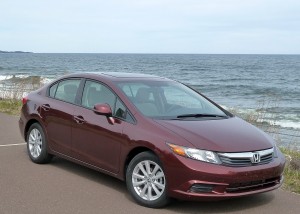
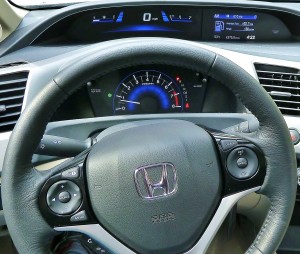
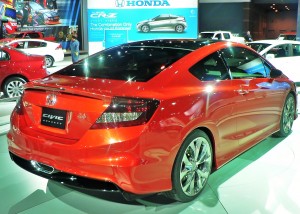
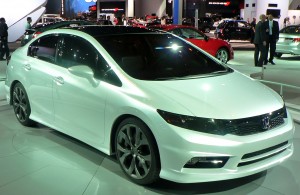
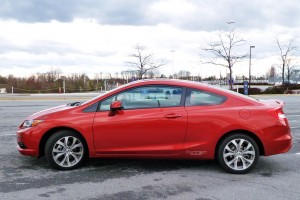
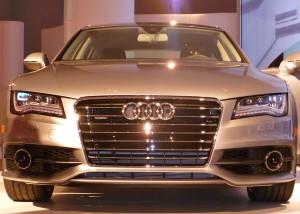
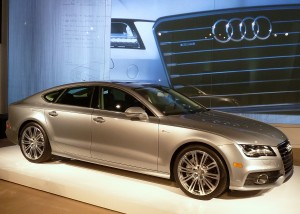
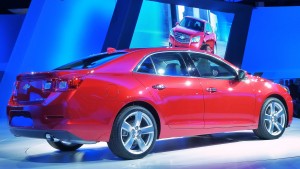
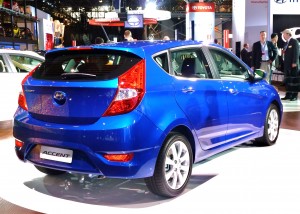

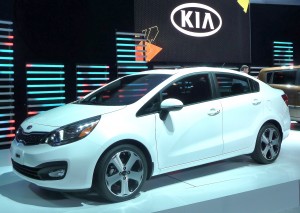
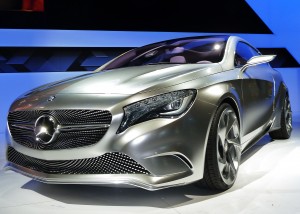
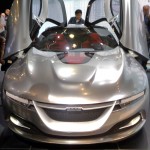
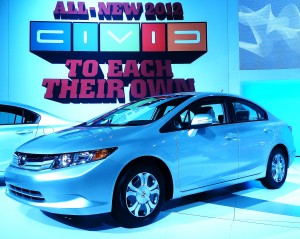
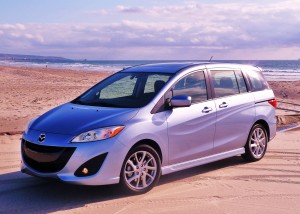
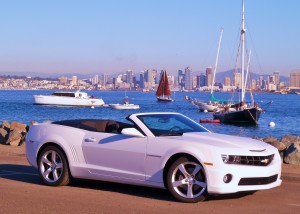
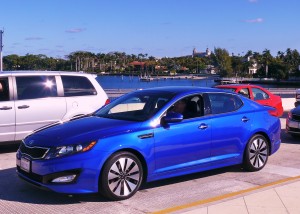
 John Gilbert is a lifetime Minnesotan and career journalist, specializing in cars and sports during and since spending 30 years at the Minneapolis Tribune, now the Star Tribune. More recently, he has continued translating the high-tech world of autos and sharing his passionate insights as a freelance writer/photographer/broadcaster. A member of the prestigious North American Car and Truck of the Year jury since 1993. John can be heard Monday-Friday from 9-11am on 610 KDAL(www.kdal610.com) on the "John Gilbert Show," and writes a column in the Duluth Reader.
John Gilbert is a lifetime Minnesotan and career journalist, specializing in cars and sports during and since spending 30 years at the Minneapolis Tribune, now the Star Tribune. More recently, he has continued translating the high-tech world of autos and sharing his passionate insights as a freelance writer/photographer/broadcaster. A member of the prestigious North American Car and Truck of the Year jury since 1993. John can be heard Monday-Friday from 9-11am on 610 KDAL(www.kdal610.com) on the "John Gilbert Show," and writes a column in the Duluth Reader.